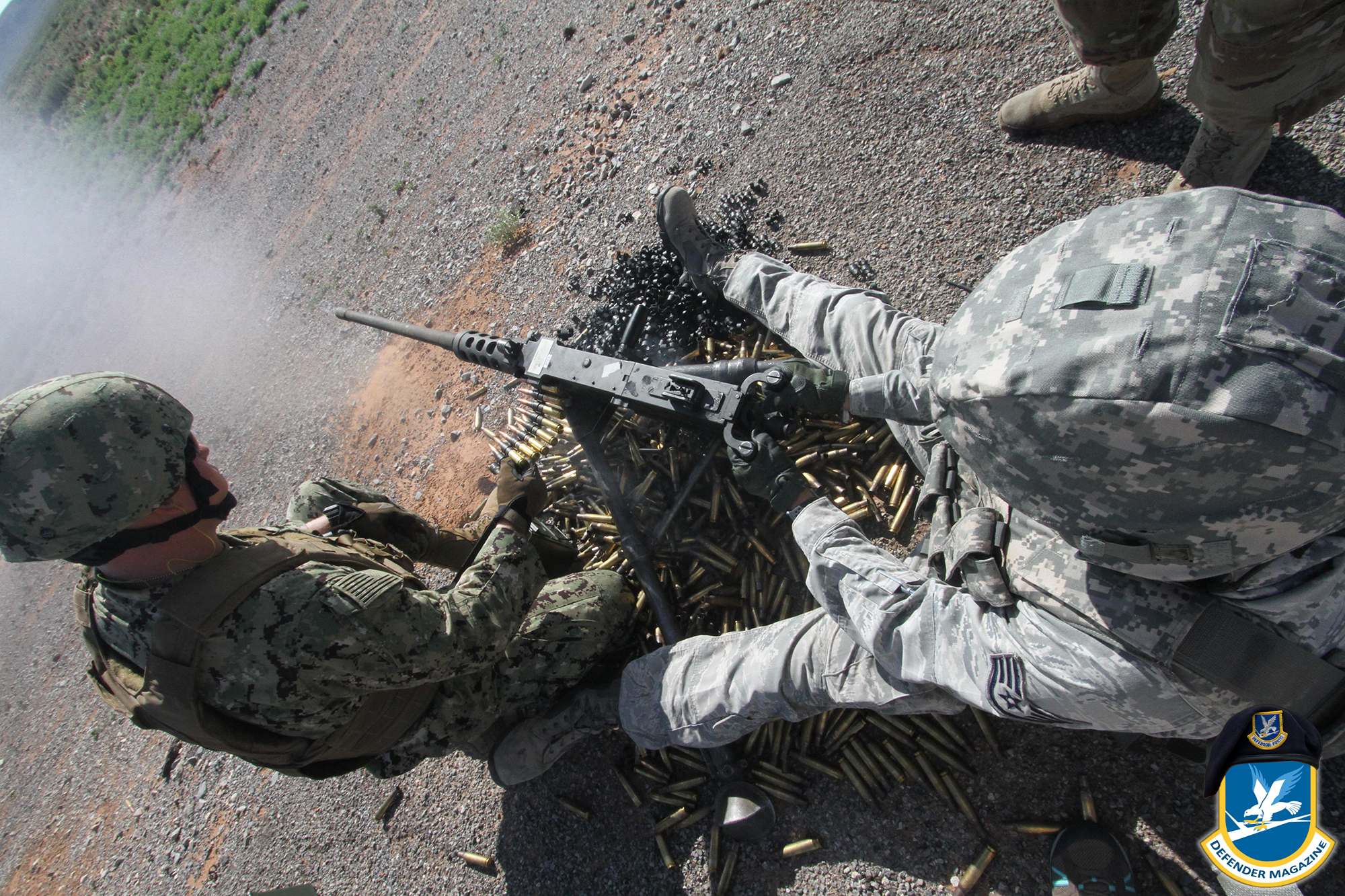
08/22/2017 – FORT BLISS, Texas (AFNS) — Working side-by-side, Sailors and Airmen built critical skill sets during the first joint service security course at the Desert Defender Ground Combat Readiness Training Center recently.
Although Sailors have attended two Desert Defender classes in the past, this was the first time Air Force and Navy students completed the same course together, according to Lt. Col. Bernard Sprute, the DDGCRTC commander.
Desert Defender, the Air Force’s largest security forces readiness training center, focuses on fundamental base defense training prior to a deployment. The standard security operations curriculum experienced by the joint students focused on topics like improvised explosive device detection, mounted and dismounted patrols, counter insurgency operations, culture awareness, entry control point operations, vehicle roll-over response, as well as combat lifesaving skills.
Desert Defender provides “a great, fundamental baseline prior to deploying, regardless of where you’re going to deploy. Whether it be a gulf state, Afghanistan, Iraq or anywhere in Africa,” said Sprute.
Bringing U.S. military services together in a frontline joint training environment is “huge,” Sprute added. The training offers a consistent baseline, “not just for our Air Force security forces defenders but for those Navy security forces going down range to the very same countries (Airmen) go to and provide the same sort of base defense and ECP operations we do.”
One of the Navy students in the joint course was Petty Officer 2nd Class Christopher Norberto, a master-at-arms, or military policeman, assigned to Naval Air Station Whidbey Island, Washington.
“Training with the Air Force allows us to learn tactics, techniques and a skill set that we wouldn’t have access to in our branch of service,” said Norberto. “It also leads to an exchange of techniques and ideas that can be built upon each other and allows us to have a deeper understanding and appreciation for our brothers and sisters in uniform.”
In addition to the joint environment, Desert Defender provides a safe environment for students to learn what can inherently be dangerous skills while in a safe, controlled environment. Mistakes made during training are quickly corrected by cadre members who are always nearby.
“Making mistakes in training allows for us to identify and correct them before they can potentially lead to catastrophic incidents downrange. The importance of having a safe and controlled environment to practice these skills and make the mistakes beforehand can be measured by the lives it can save in the future,” said Norberto.
In addition to the standard security operations course, DDGCRTC offers a wide variety of training on more than 1.1 million acres at Fort Bliss.
“Whether you’re talking about a base defense operations course…mounted or dismounted operations, we have convoy live-fire ranges here, we have real full distance firing ranges. We have restricted airspace that we can fly the RQ-11B Raven in…it’s a great place for defenders to come through and receive realistic training … as realistic as we can make it,” said Sprute.
The RQ-11B Raven is a small, unmanned aircraft system that provides security forces with real-time, direct intelligence, surveillance and reconnaissance, and target information.
“(Fort Bliss) offers a very, very realistic and rigorous training environment whether you’re talking about the elevation, the mountains, the heat, the critters…you name it, very realistic training environment to what you’re going to see downrange,” said Sprute.
Desert Defender is part of the Air Force Security Forces Center, headquartered at Joint Base San Antonio-Lackland, Texas.
By Debbie Aragon,
AFIMSC Public Affairs
